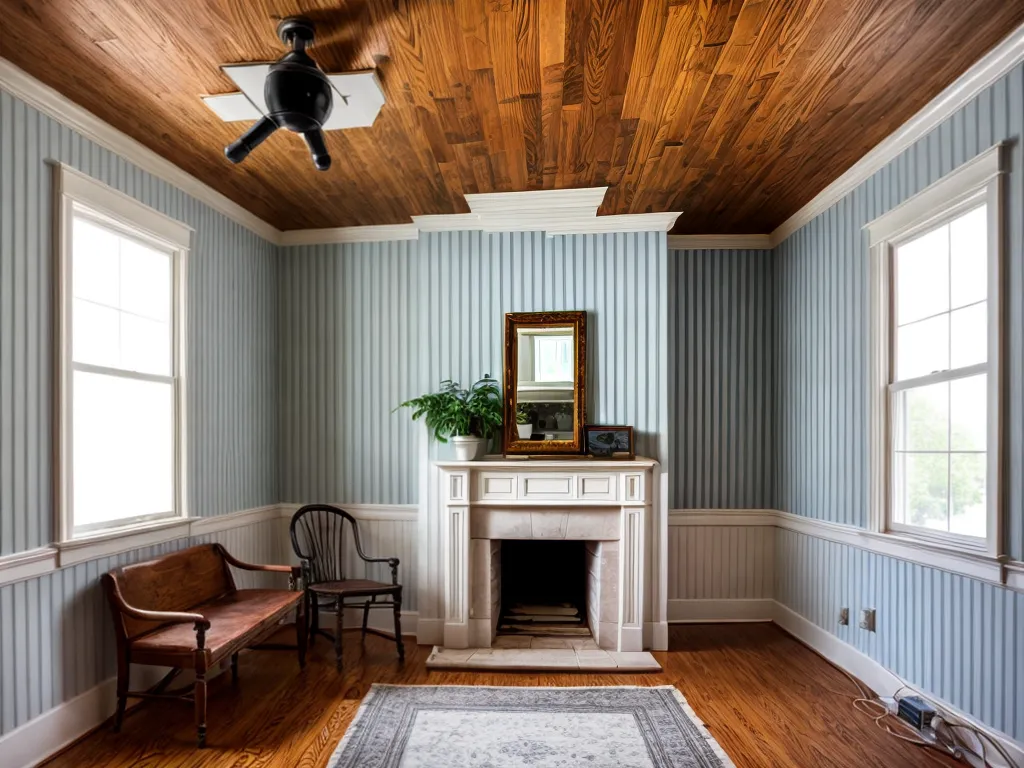
How to Run Ethernet Cable Through Old Homes
Introduction
Running ethernet cable through an old home can seem daunting, but with some planning and the right tools, it's very doable as a DIY project. Ethernet cable allows you to connect devices like computers, smart TVs, game consoles, and printers to your home network and router for fast, reliable connectivity. While WiFi can also provide internet access, ethernet cables offer superior speeds and stability. This guide will walk you through everything I needed to know to successfully run ethernet cables through my old house.
Gather Information and Make a Plan
The first step is to survey your home to understand the layout and determine the best routing for the ethernet cables.
-
Walk through each room and note where you want wired connections. Mark these locations on a floor plan sketch.
-
Inspect the paths between floors and rooms to see if existing wiring gaps and conduits exist. These can potentially be reused to pull new cables.
-
Identify obstacles like HVAC ducts, plumbing pipes, firebreaks, and solid framing that cables would need to route around.
-
Consider the construction materials of your home. Running cables through lath and plaster walls requires more care than drywall. Masonry homes present more challenges.
Once you've mapped out potential routes, mark where the ethernet runs would start and end. You'll terminate them in jacks mounted on walls or in floor boxes. Finally, decide on a central spot to locate your network hardware like a router, switch, and modem. This will be the hub that all ethernet runs connect back to.
Gather Supplies
Before getting started, ensure you have all the right supplies on hand:
-
Ethernet cable - Solid core CAT5e or CAT6 is recommended. Purchase the exact length needed for each run to avoid coiling excess cable.
-
Fish tape - Essential for pulling cables through walls and ceilings. A steel fish tape is sturdiest.
-
Cable tester - Confirms all wiring connections are good. Can identifyOpen cables.
-
Wall plates and jacks - Match the number of ethernet ports needed at each outlet.
-
Cable crimping tools - Crucial for attaching jacks and connectors to cables.
-
Low-voltage mounting brackets - Hold cables neatly against surfaces.
-
Coaxial staples - Only needed for securing cables to exposed wood. Avoid damaging cables.
-
Conduit and flex tubing - Helps protect exposed horizontal cable runs.
Running Cables Through Walls
The trickiest part is routing cables through interior walls vertically between floors or horizontally between rooms. Here are some best practices:
-
Locate existing gaps and conduits first. Use a wire coat hanger to probe gaps and see if a pathway exists.
-
Do not simply cut open drywall and patch after. This risks damaging existing utilities.
-
For new narrow holes, use a drywall saw to cut an outline and then chisel out the opening.
-
Drill small pilot holes through firebreaks to feed cables through before patching walls.
-
When fishing cables, leave 6-12 inches of slack on each end for terminating. Don't pull so tight that cables get stuck.
-
Seal openings with fire caulk and draft stop foam to meet building codes.
-
Label all cables at access points for easy identification.
Running Cables Through Attics and Basements
Attics and basements offer more flexibility for routing ethernet cable since utilities are not contained within the open framing:
-
Lay cables across the tops of floor joists or rafters and staple to the sides. Keep runs neat and out of the way.
-
Plastic conduit, flex tubing, or bridle rings can enclose exposed horizontal runs for a cleaner look.
-
Cables can feed down through existing conduit and drainage gaps in interior walls.
-
For basements with drop ceilings, cable trays offer an economical option to distribute multiple ethernet runs.
Connecting and Terminating Cables
Once all the physical cable pulls are complete, the ethernet cables need to be properly terminated at both ends:
-
Leave 6-12 inches of slack at the endpoint to cleanly terminate and mount jacks.
-
Use cable crimping tools to attach RJ45 plugs to the cable ends per the wiring scheme needed (A vs. B).
-
Ensure the twists in the cable pairs are maintained as close to the plug as possible.
-
Test each cable run for connectivity before mounting jacks in outlets.
-
Label both ends of the cable so the two endpoints can be correlated.
-
Mount the wall plate covers and jacks with short patch cables to devices.
Finally, connect all the home runs back to a central switch or router in the designated networking closet or panel.
Final Thoughts
Running ethernet cables yourself requires planning, patience, and care to avoid damage, but it can be very rewarding. The investment of time upfront to neatly route and terminate cables is well worth it for the performance and stability gains. Take things slow, leverage existing pathways where possible, and be mindful of building codes. Your wired home network will be up and running smoothly in no time! Let me know if you have any other specific questions.